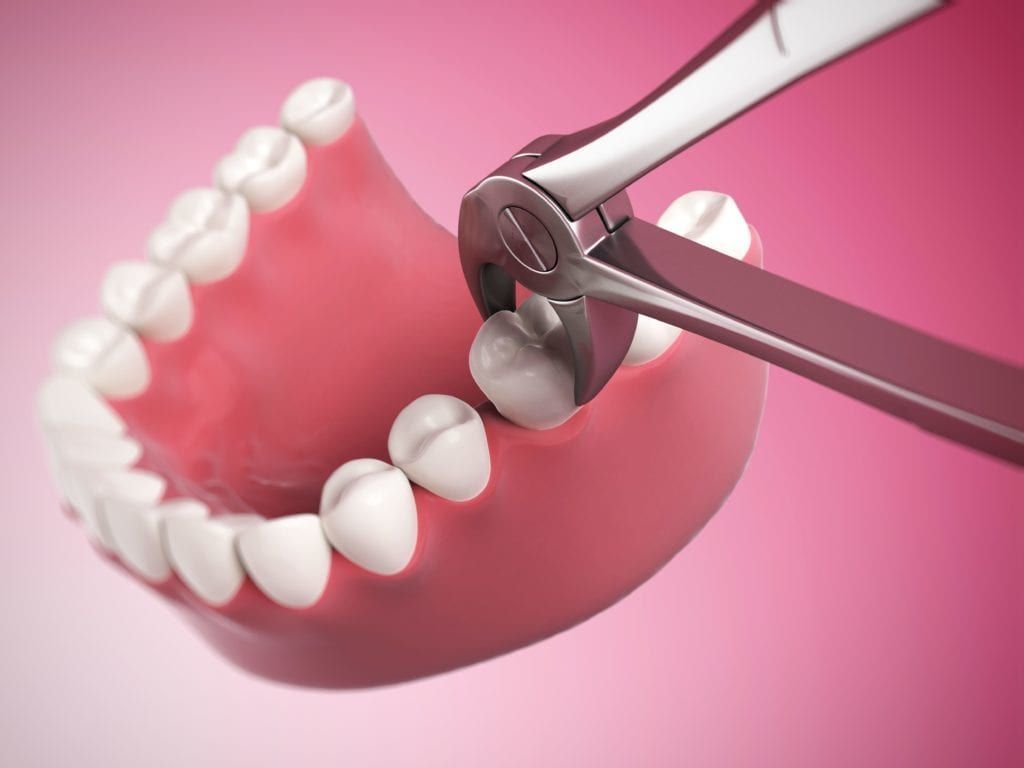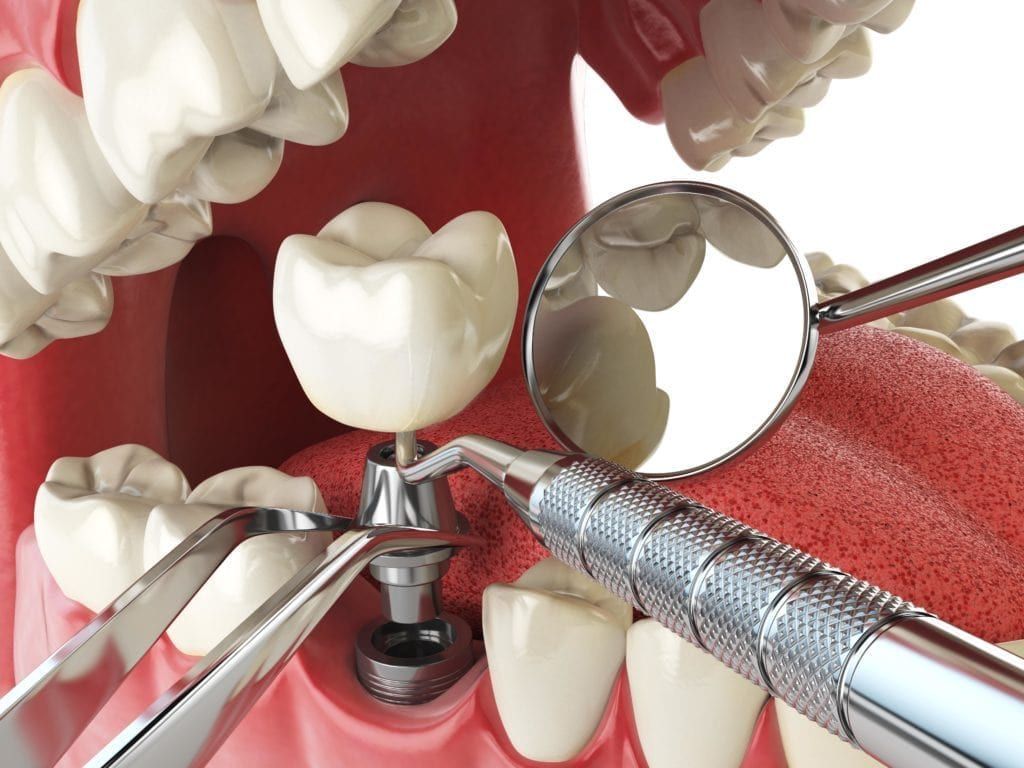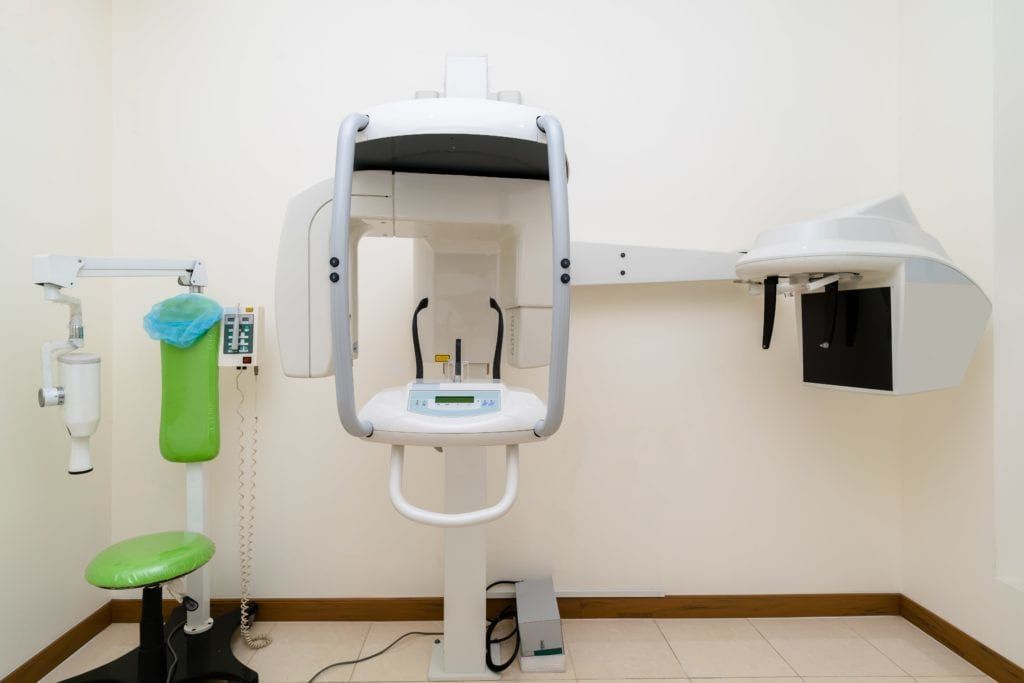Dental implants are perhaps one of the greatest restorative dental developments. Anchored into the jawbone, these titanium screws act as artificial tooth roots and can support a dental prosthetic while providing the necessary strength and durability to maintain function. Not only do dental implants restore chewing and speaking function, but they also work to restore the visual aesthetics of a smile as well.
Not only are dental implants an ideal restorative dental treatment, but they can be used for a number of dental concerns. Teeth that are severely damaged or decayed, as well as those that are missing altogether, can be restored with dental implants. Furthermore, dental implants can restore these teeth using a single treatment and maintaining the natural bone structure.
However, in cases where teeth are severely damaged or decayed, the affected teeth will need to be extracted prior to the placement of dental implants. The extraction of damaged and/or decayed teeth is an important step in the restorative treatment of the overall smile and an essential step in the placement of dental implants.

While tooth extractions are usually the last possible option, they are sometimes necessary when a tooth is too damaged or decayed to be properly and safely restored by other methods. Additionally, if the affected tooth is posing a threat to the surrounding teeth or restricting overall function, it will likely need to be extracted to restore good oral health.
Most dentists opt to do extractions and implant placement procedures as two separate procedures. In fact, implant placement procedures are often completed 3-6 months after a tooth extraction in order to allow the extraction site to heal. While this may be beneficial in some cases, Dr. Gregory Young offers an alternative that he believes is far more beneficial to his patients and their overall treatment outcomes.
Instead of performing an extraction as one procedure, waiting, and then performing the implant placement as a second procedure, Dr. Young instead completes both the extraction and implant placement in a single procedure. This is known in the dental world as an immediate dental implant. If a dental prosthetic, such as a dental crown, dental bridge, or implant-supported denture, is attached to the implant at this time, then it is known as an immediate load dental implant.

Although extractions and implant placement were traditionally performed separately, recent research has found that there are far more benefits for patients when implants are placed immediately after tooth extractions. Some of these benefits can include only having to undergo a single procedure, preserved gum tissue, less pain, and no need for partial dentures, a temporary bridge, or gaps from missing teeth. These benefits not only make the procedure easier on the patient, but they improve the chances of treatment success.
Ideal candidates for an immediate-load implant procedure are those who are looking to obtain dental implants, but who only want to undergo a single procedure. Additionally, patients must have adequate bone mass to properly support a dental implant. This is one reason why it is beneficial to place implants directly after tooth extractions.
When a tooth is lost, or extracted, the surrounding bone lacks stimulation. As a result, the calcium in the bone that makes up the socket and surrounding jaw bone will begin to be absorbed back into the body through a process called bone resorption. When this occurs, the bone structure will gradually begin to change shape. In most cases, bone loss can happen around six months after a tooth is lost or extracted.
By placing an implant directly after extraction, it means that the patient will most likely have adequate bone mass to support a dental implant. If the patient had waited, however, they may need to undergo a bone graft to build up the bone before having an implant placed. Although this can vary from patient to patient, immediate implant placement following extraction generally allows for quick implant placement with less procedures.
The first step in having immediate load implants placed is to undergo a consultation to determine if this is the best dental implant procedure for you. During this appointment, dental x-rays and a CBCT scan will likely be taken to evaluate the underlying bone structure. If it is decided to proceed with immediate load implants, Dr. Young will discuss your sedation options and post-op care before scheduling the procedure.

During your procedure, you will be sedated to keep you relaxed and anesthetized to keep you from feeling any pain or discomfort. The first part of your procedure is the tooth extraction. There are two different types of tooth extraction techniques that can be used: simple or surgical. A simple extraction is when an elevator tool is used to rock the tooth out of the socket. A surgical extraction is when the tooth is fragmented into pieces and removed piece by piece.
Once the tooth or teeth have been extracted, the remaining socket will be thoroughly cleaned to remove any bacteria or infected tissue. The socket will then be shaped to accommodate the dental implant. After the socket has been properly shaped, the dental implant will be implanted into the socket. At this point, abutment, or connector, piece will be attached. In some cases, the dental prosthetic may also be placed at this time.
To promote optimal healing, Dr. Young also uses Platelet Rich Fibrin or PRF. PRF essentially helps the body to heal itself since it is made entirely from platelets in your own blood. Through just a simple blood draw and centrifuge process, PRF can be manufactured. It is then placed at the treatment site during the procedure. Because PRF promotes collagen production, it helps the surrounding soft tissues to heal quicker than usual.
After immediate load implants are placed, there will be some post-operative instructions that you will need to follow. The specifics of these instructions can vary slightly, and they will be explained to you during your pre-op appointment. However, these instructions generally revolve around keeping the treatment site clean, taking antibiotics, resting, and abiding by a temporary soft foods diet.
If you are missing some or all of your teeth, or if you have teeth that are severely decayed or damaged, schedule a consultation with Dr. Gregory Young of Advanced Dental Implant Services today! Advanced Dental Implant Services has five convenient Michigan locations: Ann Arbor, Bloomfield, Southfield, St. Clair Shores, and Warren.




